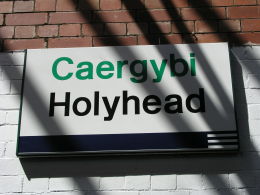Posted 28th April 2010 | 5 Comments
Airline ash crisis caused major surge in rail travel

THE aviation crisis caused by the Icelandic volcanic eruption has boosted rail passenger figures by seven times or even more on at least one route, and operators believe that some of the stranded airline passengers they rescued will now stay with trains in future.
The industry is gradually returning to normal schedules as the after-effects diminish. The Scottish Government has today reduced the status of the crisis to 'stand by', and the daily emergency cabinet meetings will no longer be held, although a spokesman said arrangements had been made to restart them at short notice should the ash return.
Some operators ceased running reliefs or strengthening services at the end of last week, but Virgin said its extra trains to Scotland and Holyhead will continue until the coming weekend, when the situation will be reviewed. Extra or strengthened trains were also run by Arriva Trains Wales, East Coast, First Great Western and ScotRail during the crisis. After planes started to arrive at airports in southern England again, Southern and National Express East Anglia increased their services from Gatwick and Stansted.
The greatest reported increase in passengers has been on the Holyhead route, where Voyagers were doubled in length and Arriva Trains Wales services were also strengthened, with an extra overnight ATW train provided from the port to Crewe for a West Coast connection.
Virgin said Holyhead business had been at least seven times higher than normal. The company also denied allegations that it had made capital out of the crisis by doubling some fares.
A spokesman explained: “No fares were changed at all, and in fact we were very flexible about, for example, accepting out of date tickets from airline passengers who had eventually made it home to Britain. In addition, all relief trains were declared to be ‘off-peak’, and once they were on the website booking system we started to offer our standard deeply discounted advance fares on them as well.
“The extra and strengthened trains were achieved at very short notice indeed as a result of first-class co-operation from Alstom and Bombardier, as well as Network Rail and of course other operators. It has been an excellent example of the industry working together, and pulling out all the stops to meet the challenge. We are pretty sure that some of the passengers from airlines will stay with rail, now they have seen what it can offer.”
Reader Comments:
Views expressed in submitted comments are that of the author, and not necessarily shared by Railnews.

James Barlow, Sheffield, United Kingdom
how come bombardier and alstom helped out, dont quite get what they did?
Anoop Shah, London
Electric trains are generally more powerful than diesel trains and can accelerate faster, particularly up hills. Therefore electrification can shorten journey times even if speed limits do not increase.
Adam, Birmingham
I don't see how you could increase the speed with just electrification alone since Virgin use Class 221 Super Voyagers which are on a par with the Pendolinos
Mark Rowe, Norwich, England
Electrification of the North Wales Coast would be great but the increase in passengers has not come from there but is boat traffic from Ireland due to lack of air travel. A more frequent service will only benefit from extra ferry services & a reduction in Anglo-Irish flights. Unfortunatley i envisage neither happening.
les Burge, leicester, england
If the increase in passenger traffic to holyhead was seven times greater does it not show that given a frequent and much faster service to this destination rail could reap the benefits.Electrification looks like what is required.